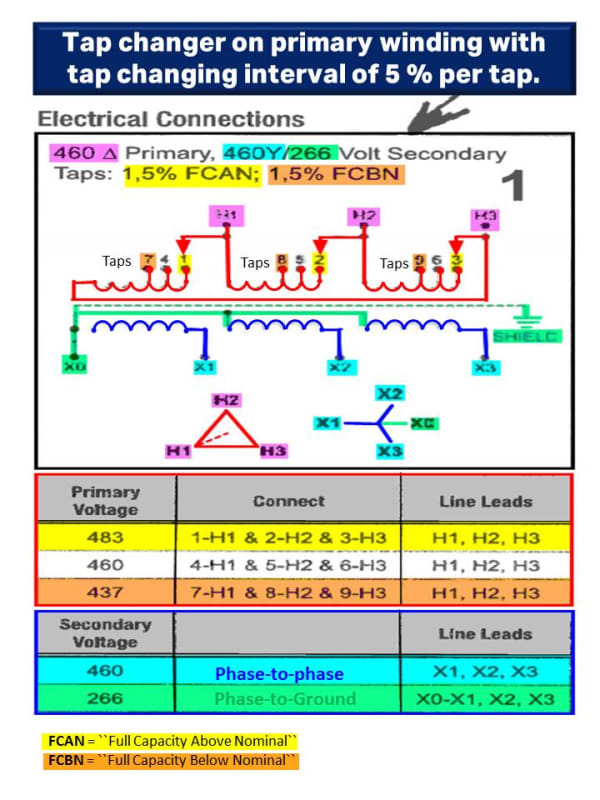Attached is a cut sheet of the electrical connections for a SOLA isolation transformer.
What is the output voltage if we were to connect our 480V supply to each one of the different taps?
What is the formula?
For example….
Connect the 480V to the 483V tap – what is the calculated value?
What about when we connect our 480V the 460V tap?
What about when we connect 480V to the 437V tap?
What if our input voltage changes to say 490V?
What is the output voltage if we were to connect our 480V supply to each one of the different taps?
What is the formula?
For example….
Connect the 480V to the 483V tap – what is the calculated value?
What about when we connect our 480V the 460V tap?
What about when we connect 480V to the 437V tap?
What if our input voltage changes to say 490V?

